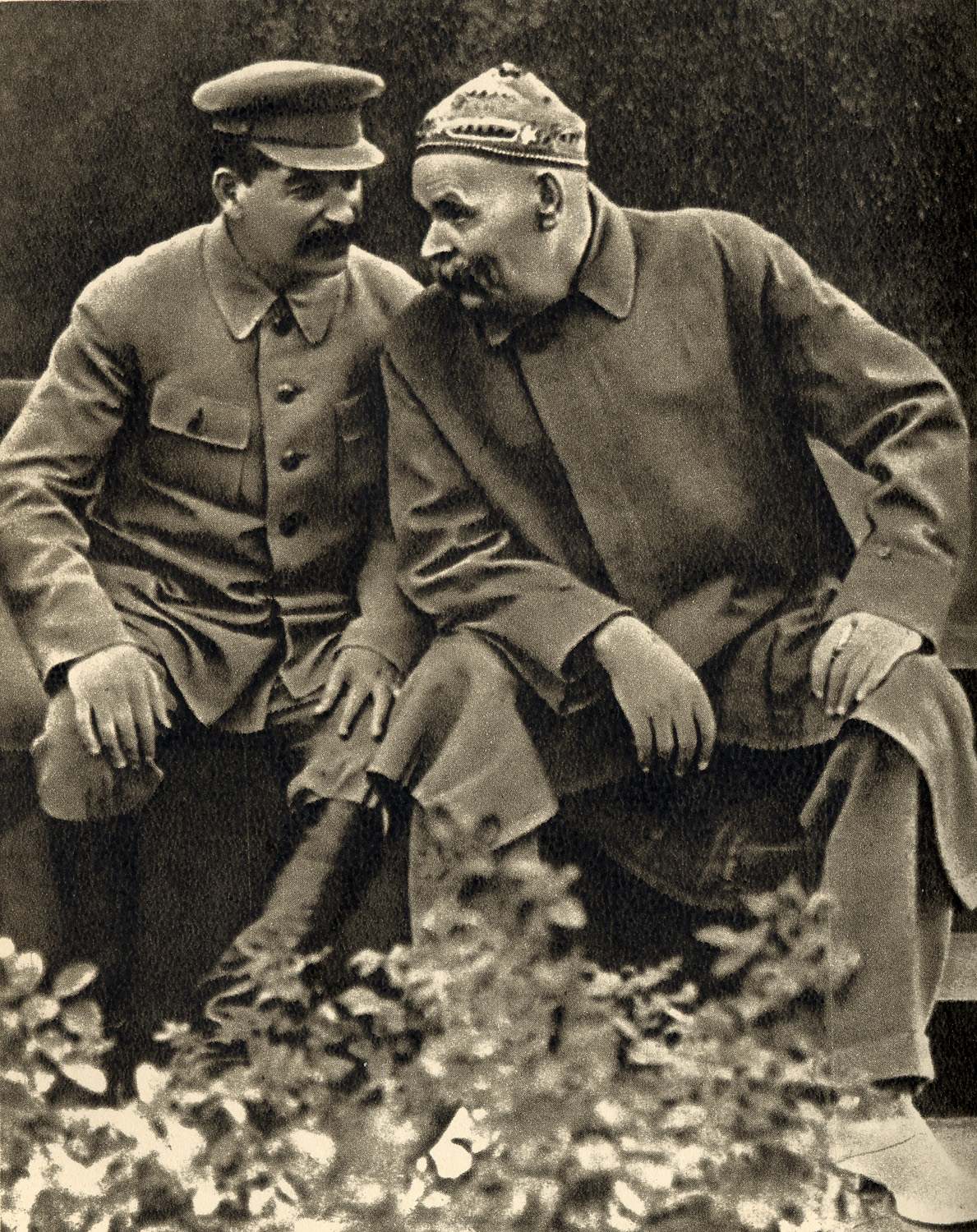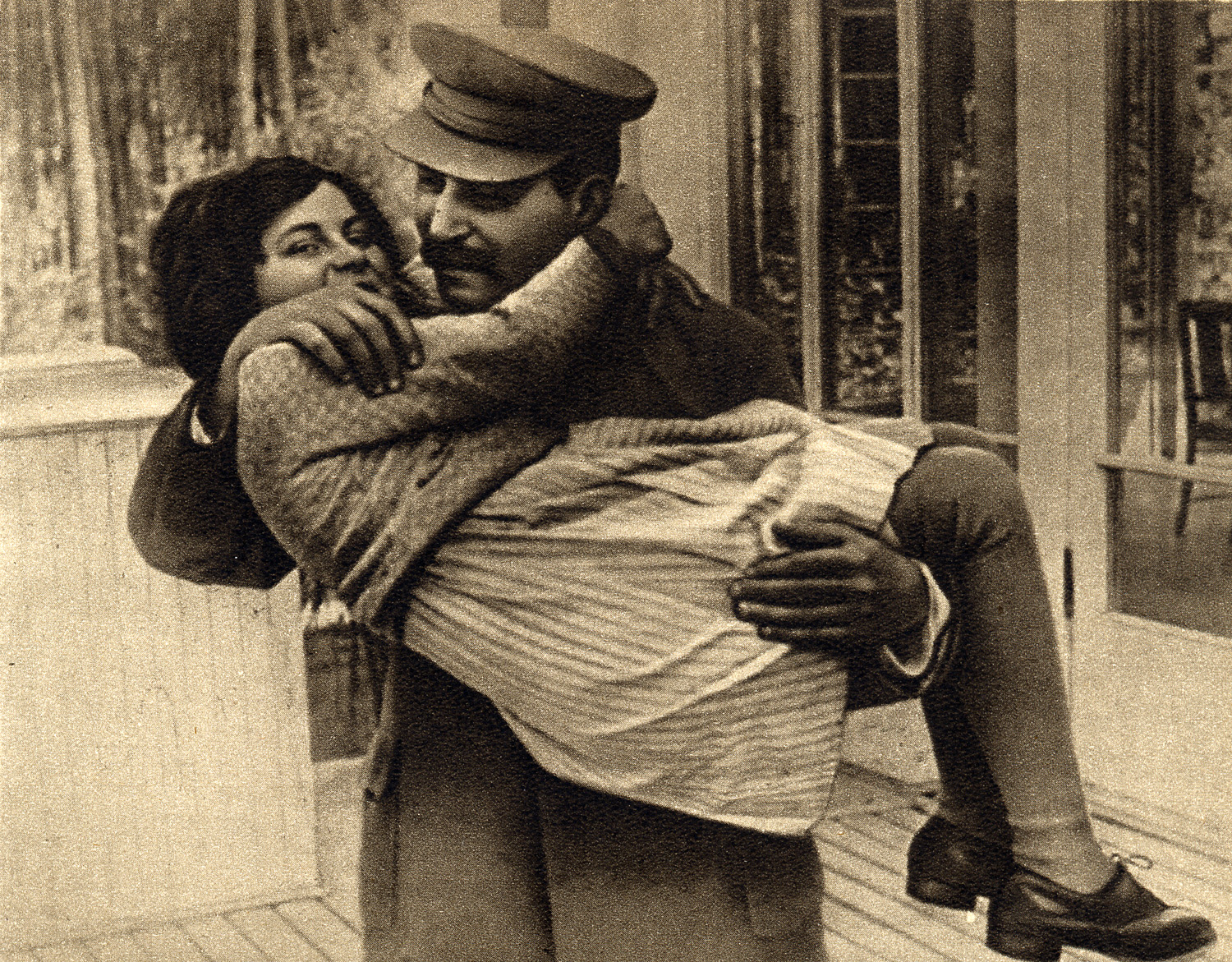.

Joseph Stalin and Maxim Gorky, 1931: photo from Pravda, 1940 (image by EugeneZelenko, 1935)
Stalin is not Russian but Georgian. His cleverness lies in patience, willpower, and good sense. He is confident and obstinate. His enemies accuse him of lacking knowledge and intelligence; they are mistaken. He is not a cultured man in the European sense of the word, not overfed with sophistry and psychological fanaticism. Stalin is a barbarian, in Lenin’s sense of the word, an enemy of Western culture, psychology and ethics. His intellect is entirely physical and instinctive, in a natural state, and without the prejudices or the moral sense of a cultured man. It has been said that men reveal their character in their bearing. I saw Stalin in May 1929 at the Pan-Russian Soviet Congress, walking up on to the stage in the Grand Theatre of Moscow. I was just below the footlights in the orchestra stalls when he appeared from behind a double row of the People’s Commissaries, the delegates from Tzic and the members of the Party’s Central Committee, lined up on the stage. He was quite simply dressed in a gray jacket of military cut and dark cloth trousers gathered into his high boots. Square-shouldered, short, thick-set, his massive head covered with black curly hair, and narrow eyes accentuated by very black eyebrows; his face was darkened by shaggy black moustaches; he walked slowly and heavily, striking the ground with his heels as he went; his head thrust forward and his arms swinging made him look like a peasant, but a peasant from the highlands—hard, patient, and obstinate. Ignoring the thunder of applause which greeted him, he walked on slowly, took his place behind Rykoff and Kalinin, raised his head, looked at the huge crowd which acclaimed him, and stood motionless and stooping slightly—his eyes fixed straight in front of him. About twenty Tartar deputies, representing the autonomous Soviet Republics of the Bakirs, the Bouriat-Mongols, Iakouts, and Daghestan alone observed a rigid silence in their stage-box. They were dressed in yellow and green silk kaftans, with silver-embroidered tartar caps on their long black shiny hair and they stared at Stalin with little narrow slit eyes: at Stalin the dictator, the iron fist of the Revolution, mortal enemy of the West and of civilized and bourgeois Europe. When the delirious shouts of the crowd began to die down, Stalin slowly turned his head toward the Tartar deputies: the Mongols’ eyes met those of the dictator. A great shout filled the theatre: it was the greeting of Proletarian Russia to Red Asia, to the people of the plains, the deserts, and the great Asiatic rivers. Again Stalin turned coolly to the crowd. He remained bent and motionless, his unseeing eyes fixed straight in front of him.

Stalin with his daughter Svetlana, 1935: photo from Pravda, 1940 (image by EugeneZelenko, 1935)
Curzio Malaparte: A Coup d'Etat that Failed: Trotsky vs. Stalin (excerpt), from La tecnica della colpo di Stato (The technique of coup d'état), 1931, translated by Sylvia Saunders, 1932